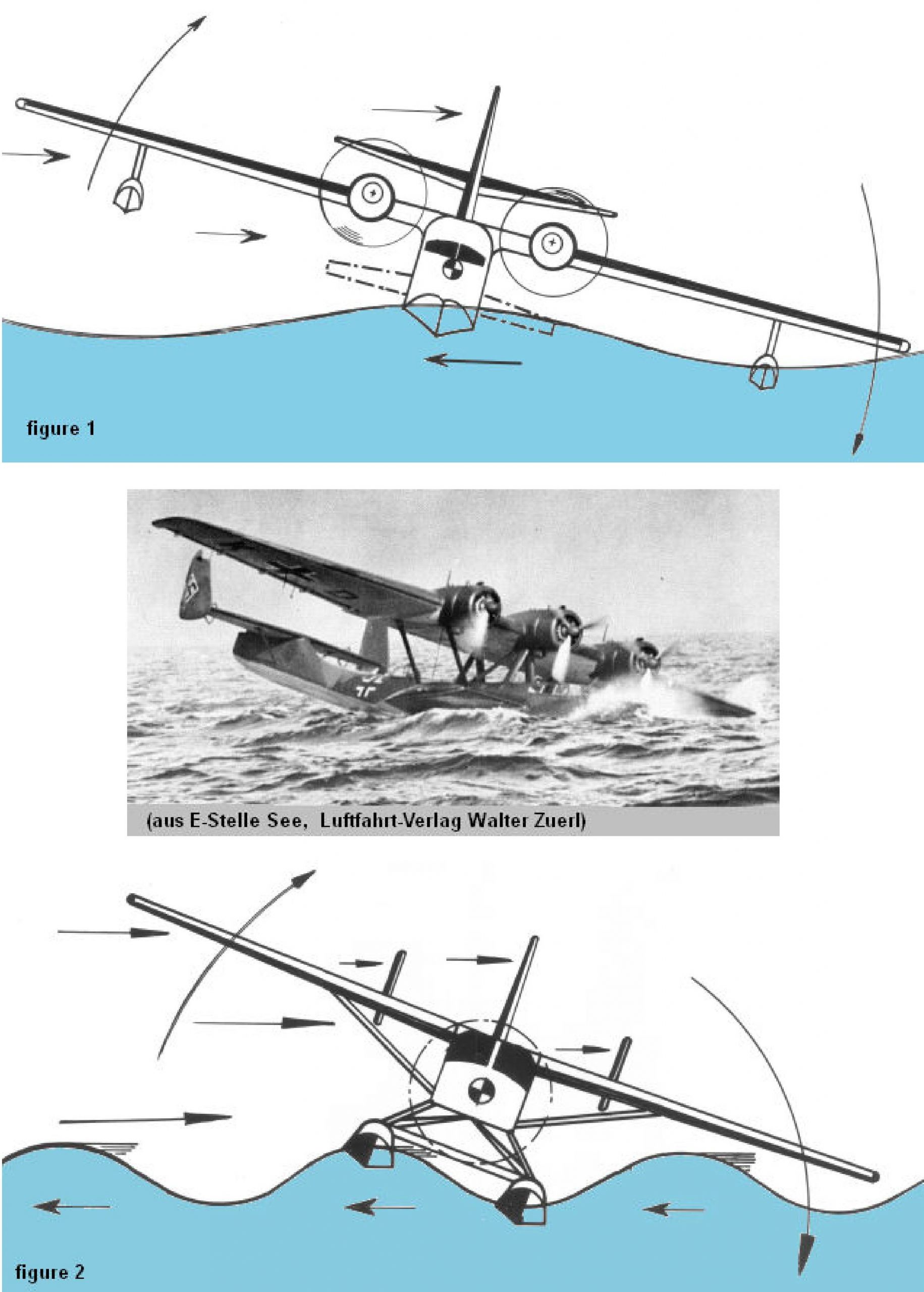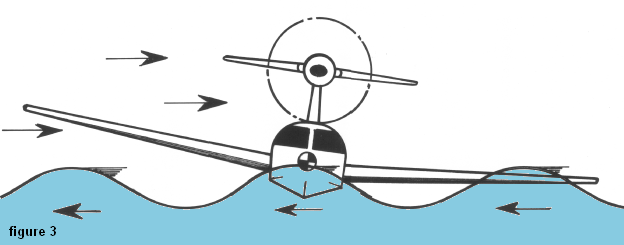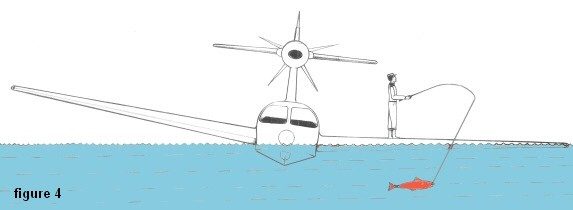The float-wing acts on the water like a large sponson, stabilizes the amphibian laterally, eliminates wing-tip floats and can be used as a gangplank. It is a wet wing; the large fuel capacity makes the Equator a long-range aircraft to remote sites without refuelling facilities. The wing incorporates the strong main landing gear. The amphibian is insusceptible against strong cross-winds and high waves when taxiing a 360 degrees. Accidental capsizing is impossible. The hydrodynamic V-hull with step, water-rudder and reverse propeller give the amphibian good characteristics during all maneuvers on water.
Since the light water-loading unit, reacting all over the V-hull and bottom of the inside section of the wing, the amphibian quickly lifts up out of the water, onto the step and accelerates.
An aircushion forms under the wing at speed and gives the amphibian a stable self-centering characteristics. During the first second on step the active 3rd aileron on the pylon gives the amphibian the necessary laterally stability.
The powerplant location, the float-wing and the fiber composite together make the Equator amphibian an elegant, high-performance beauty in the world of the seaplanes and makes all of our and our customers dreams come true.
What does the Equator distinguish from other seaplanes?
Experienced seaplane-pilot knows that all sizes and types of high-wing seaplanes with an elevated location of the center of gravity tend to capsize in strong cross-winds and are exposed to nose-over during watering. These seaplanes are primarily airplanes and only secondarily flying boats.
Strong cross-winds rise the windward wing, with or without wave support. The leeward wing lances overarm into the water. The wind pushes more and more and the seaplane tilts on its back. No sponson or wing tip float can avoid the capsizing. These stabilising elements are not designed for this purpose. (see figure 1 for a large high-wing seaplane with tip-floats or sponsons and figure 2 for a single engine high-wing landplane on floats)

The worldwide only safe system is to date the Equator’s float-wing. Constructed in water-tight, unsinkable, corrosion resistant fiber composite. Each version of the Equator accepts higher waves and stronger winds than a comparable sized seaplane can withstand. It manoeuvres on water better than a boat. Its float-wing acts as large sponson, gangplank and as strong (robust) surfboard. It can ride and dance on the waves with and through the strong wind and can go through breakers. The Equator does not provide enough working surface to the cross-wind, the location of the centre of gravity is low, the buoyancy of the floating wing as well as the water drag against the plain wing surface are too strong. The waves simply flow over the float-wing and drain again. With engine off the wind drifts the Equator only a short distance until it gets oriented towards the wind by its windflag stability (see figure 3).

Under calm conditions, the wing of the Equator can serve as a gangplang to walk on for fishing e.g. (see figure 4).

History of the float-wing
The powerplant location of the Equator is well known from many other airplanes. The modern aerodynamics of the Equator has already been used for decades in the glider design as well as is the fiber-composite construction as a material of the future, meanwhile applied to other motorized airplanes.
But the genious float-wing system is not known to many pilots inspite of its advantages.
Ralph S. Barnaby, aviation pioneer and holder of the US Soaring Certificate # 1, had tested the 14-seat amphibian military gliders LRQ und LRA with float-wing design successfully on land and on water during World War II.

Molt B. Taylor, another genious US aviation pioneer, crucially contributed with his 2-seat amphibian Coot with float-wing design that this construction principle became popular in a certain group of seaplane pilots.
